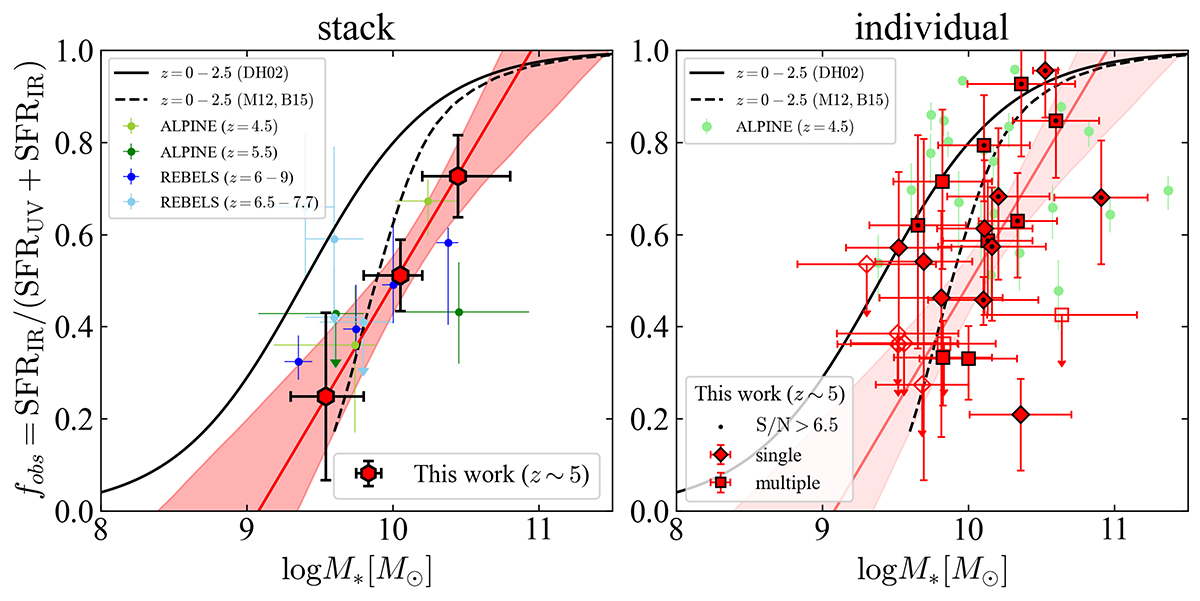Fig. 7.

Download original image
Obscured fraction as a function of stellar masses. Black solid and dashed lines show the results from Whitaker et al. (2017) with two different dust emission templates: that of Dale & Helou (2002) “D02” and that of Magdis et al. (2012) and Béthermin et al. (2015) “M12, B15”. (left) Results from our stacking analysis with those in previous studies. The obscured fraction increases as a function of the stellar mass, and this trend is in good agreement with the results at z ∼ 5 from the ALPINE survey (Fudamoto et al. 2020a) and those at z ∼ 6–9 from the REBELS survey (Algera et al. 2023); another result at z ∼ 6.5–7.7 from the REBELS survey (Bowler et al. 2023) shows the opposite trend, with slightly higher fobs at M* < 1010 M⊙. (right) Results for the individual galaxies. The diamonds and squares correspond to the two classifications of single and multiple. We also show the results of the galaxies detected in the dust continuum at z ∼ 5 (Fudamoto et al. 2020a). The CRISTAL observations capture the galaxies with smaller fobs compared with previous z ∼ 5 galaxies individually detected thanks to deep observations. There is significant variation in the fobs–M* relation from galaxy to galaxy.
Current usage metrics show cumulative count of Article Views (full-text article views including HTML views, PDF and ePub downloads, according to the available data) and Abstracts Views on Vision4Press platform.
Data correspond to usage on the plateform after 2015. The current usage metrics is available 48-96 hours after online publication and is updated daily on week days.
Initial download of the metrics may take a while.


